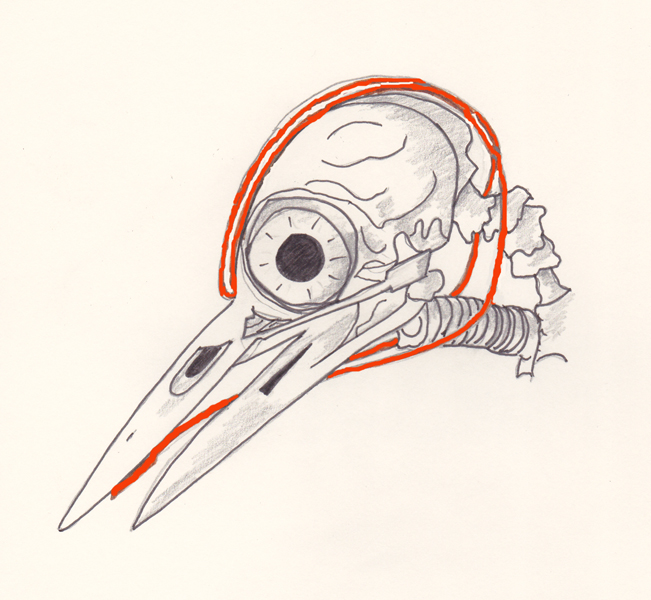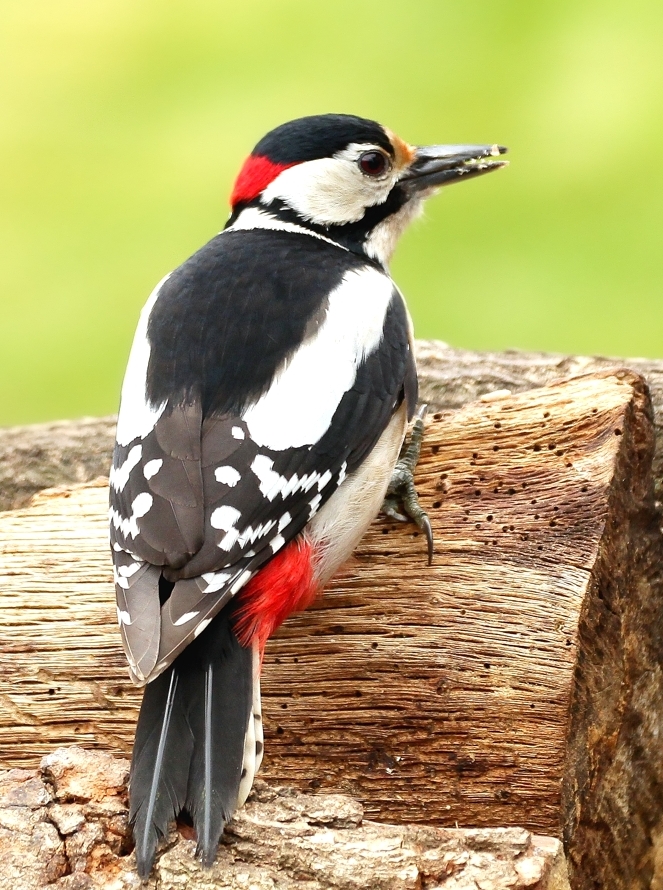Have you ever wondered why woodpeckers don’t get headaches? It is quite remarkable when you think about it. This bird, on a regular basis, subjects its brain to 1000 g of deceleration every time it pecks (g represents the acceleration due to gravity acting on all bodies on the surface of the Earth), and it does so in bursts of 10 – 20 pecks at a time, many times a day! Fighter pilots need specially designed g-suits to not lose vital biological functions at only a handful of g’s.
Studying the woodpecker, then, enables an important question: How can the biophysics of pecking help humans avoid head injuries? This is important because head injuries are a common occurrence. Humans hit themselves in the head a great deal, and so any engineering solution that can additionally prevent severe injury would be beneficial compared to the state of the art. More and more, engineers are turning to nature to seek “bio-inspired” solutions (a field called “biomimicry”). The reason is simple: no need to reinvent the wheel; after all, evolution has selected the best adaptations to behavior. Whatever edge the original pecker birds had to find their food, evolution has rewarded them with ingenious adaptations that now allow furious pecking without injury!
In a paper published in PLOS One by a team led by Dr. Lizhen Wang of Beihang University in China, new insights into the “safety features” of the woodpecker have been identified. In a comprehensive study of the biophysics, involving X-ray analysis of the skull, strength testing of bones, and detailed computer simulations of the stresses on the skull resulting from pecking, the researchers concluded, unsurprisingly, that the woodpecker is incredibly well adapted to pecking. What was surprising was the co-existence of clever adaptations that, hopefully, will weave themselves into original engineering solutions for head protection.
The most incredible adaptation is the hyoid bone. In humans, the hyoid bone is a tiny relict bone in the neck. It is used to anchor muscles that enable tongue movement and swallowing. For forensic scientists it is useful because its fracture is a telltale sign of deadly forced strangulation.

By Jimfbleak (Own work) [CC BY-SA 3.0 (http://creativecommons.org/licenses/by-sa/3.0)], via Wikimedia Commons
The researchers were able to confirm this spongy material using high resolution X-ray computed tomography, which is a fancy way of saying “non-destructively slicing the skull with X-rays to see inside.” Using their newfound knowledge of the how the skull is built. They designed, using a computer, a model of the skull. In this computer model they assigned a strength value for each bone (that they had measured mechanically by breaking them in a gauged instrument in a previous set of experiments), linked them all together on the computer, and simulated a peck. Using state-of-the-art engineering mathematics (called “finite-element analysis”), they were able to investigate (and predict) the amount of stress that the beak experiences during a peck, and how that stress travels through of the bones of the skull. It is this study that revealed just how ingenious the hyoid bone is in channeling a great deal of pecking stress through it, sparing more sensitive parts of the skull.
The woodpecker is uniquely designed to experience high g brain decelerations. Humans brains are not, but are impact-tightening helmets in the horizon? Studies like those of Dr. Zhang and her team are sure to inspire the next generation of safety engineers.


